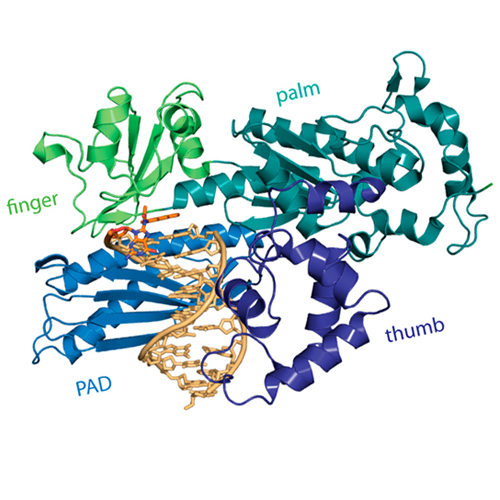Mechanism of replication blocking and bypass of Y-family polymerase Eta by bulky acetylaminofluorene DNA adducts
12-Nov-2010
PNAS, 2010, vol. 107 no. 48 20720-20725, doi: 10.1073/pnas.1008894107 published on 12.11.2010
Heterocyclic aromatic amines produce bulky C8 guanine lesions in vivo, which interfere and disrupt DNA and RNA synthesis. These lesions are consequently strong replication blocks. In addition bulky adducts give rise to point and frameshift mutations. The translesion synthesis (TLS) DNA polymerase Eta is able to bypass slowly C8 bulky adduct lesions such as the widely studied 2-aminofluorene- dG and its acetylated analogue mainly in an error-free manner. Replicative polymerases are in contrast fully blocked by the acetylated lesion. Here, we show that TLS efficiency of Pol Eta depends critically on the size of the bulky adduct forming the lesion. Based on the crystal structure, we show why the bypass reaction is so difficult and we provide a model for the bypass reaction. In our model, TLS is accomplished without rotation of the lesion into the anti conformation as previously thought.











